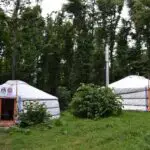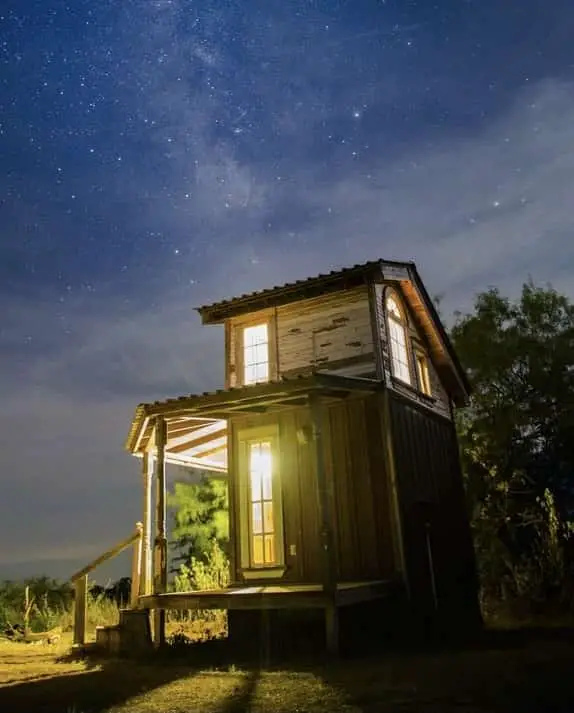
A cabin is a wonderful place for a peaceful retreat, but without a power source, it can be sadly lacking in the comforts of home. If you plan to spend time in your cabin during the winter, you must prepare it for the elements.
Here’s a starter guide on how to wire a cabin to run off a generator.
Table of Contents
- How to Hook Up a Generator to a Cabin
- Final Thoughts
How to Hook Up a Generator to a Cabin
Making sure you have power is one of the most critical aspects of cabin prep. If your cabin or yurt is somewhat remote, it may not have access to the power grid, and if that’s the case, you have to know how to run a cabin off a generator.
A generator is also a valuable backup power supply, even if your cabin is connected to grid power. If the power grid goes out, a generator can stop your food from spoiling and prevent discomfort for you and your family. It’s worth investing in a generator in case of such an emergency.
If you’re wondering how to hook up a generator to a cabin, there are several options:
- Install a transfer switch
- Install an interlock device
- Install an access feed for your generator
Unless you’re an electrician, don’t wire your cabin yourself. This job is something you should hire an electrician for. If you aren’t trained in wiring a residence, you risk electrocution or unsafe connections that might result in fire.
Option 1: Use a Transfer Switch
If your cabin is on the grid, you can wire your cabin for both grid and generator power and install a transfer switch to switch over to either source. This way, you have more flexibility about where you get your energy from. If either your grid power or your generator fails, you will be able to switch over to the other power source using a transfer switch.
Step 1: Wire the Cabin
For your safety and the safety of the cabin, hire an electrician to wire the cabin for you. Because of the risk of electrocution and fire, it’s best to leave the job to a professional. Once the cabin is wired, you can install the generator yourself. Some manufacturers stock pre-packaged generators that come with a guide for installation.
Step 2: Install the Transfer Switch
Consumer Reports defines a transfer switch as “a mini circuit breaker panel that draws electricity from your generator instead of the power company.” Think of it like the lever that guides train cars to different tracks.
Your electrician will install your transfer switch right next to your circuit breaker panel in your cabin. This way, you don’t have to use extension cords to hook up your generator. You can connect the generator directly to the wiring installed in the cabin.
Step 3: Connect Desired Circuits to Generator
Since your generator may not be able to handle all of your power loads, you need to decide which circuits to connect. Discuss with your electrician which circuits in your cabin you want to receive power from the generator in the event of an outage. Certain appliances and systems are essential:
- Heating unit
- Cooling unit
- Water pump
- Water heater
A transfer switch also enables you to power more devices on your generator. Without a transfer switch, you would need to run an extension cord from the generator to any appliance that needs a lot of power, such as heating and cooling units.
Connecting the generator to internal wiring makes for fewer jumbled cords on the floor.
Step 4: Transfer Power from Generator
If grid power goes out in your cabin, the transfer switch will automatically send a signal to the generator, which will switch on and start generating electricity.
This automatic startup is helpful if the power goes out while you’re asleep or away from the cabin. Suppose you’ve left food in the refrigerator while away from your cabin; it could spoil if you don’t have a backup generator.
The transfer switch is also manual like the other switches in your breaker box, so you can transfer power from either source when you want to or need to.
Having access to both a generator and grid power is also helpful if your generator can’t power all of your loads at once. Having a grid power option allows for more flexibility when it comes to powering your cabin, and you will be less likely to overwork your generator.
Option 2: Install an Interlock Device
An interlock device is a cheaper option if you want to be able to switch between grid power and generator power. If the power goes out, you will manually plug the generator into an outdoor outlet, which connects to your circuit panel.
The interlock device is a bracket that prevents your panel’s main cutoff switch from turning on while the generator is running. This way, electricity from the generator won’t travel through the circuit panel and into the grid, electrocuting the utility crews working to restore power on what they assume are inactive power lines.
Also, if the power comes back and you don’t have an interlock device in place, you may experience a power surge when grid power comes back on. Such a surge would overload your appliances.
Option 3: Install an Access Feed for Your Generator
If you plan on living off the grid, how to wire a cabin to run off a generator is essential knowledge. Along with building your cabin in compliance with zoning codes and finding or creating a source of clean water, hooking your cabin up with electricity is one of the most critical aspects of an off-the-grid lifestyle.
A direct feed to your generator is the option for you if you are making an effort to create a self-sufficient, off-the-grid cabin. Wire your cabin as though for grid power and connect it directly to your generator instead.
Step 1: Wire the Cabin
Have your electrician wire the cabin as though for grid power, but instead of connecting to the grid, ask them to install a generator access feed to the outside of the building so that you can connect your generator to the panel.
Step 2: Connect Generator to Access Feed
Connect the generator to the access feed using a typical generator cord. Your generator should now be connected to your panel. You won’t need an interlock or a transfer switch since you aren’t connected to grid power.
Option 4: Run power directly off the generator
The last option is to run your power directly off the generator to the appliance. This is the easiest and most straightforward method, but it’s important to understand this is not wiring your cabin to run of A/C current.
Instead, you’re simply using the supplied electrical outlets on the cabin to plug directly into. This is the fastest and easiest method but you will need a steady supply of gasoline to run your generator.
NOTE: Never run a generator indoors. Always store your gasoline outside, or in a well-venitalited storage area.
Every year I go to the mountains of West Virginia, and we often bring a small backup generator. This runs off a few gallons of gas and provides us time to recharge our battery devices, and run a few small appliances in the evening.
Final Thoughts
Having access to a remote cabin is a wonderful feeling. Whether it’s for relaxation, survival preparedness, or a second home, cabins are here to stay.
And although it’s completely possible to have your cabin off-grid, that doesn’t mean it can’t have power.
Consider using a generator, or solar panels to wire your cabin and you’ll enjoy many of the creature comforts of home; at a fraction of the cost.
Good luck!
See Also: Can You Build A Cabin On Public Land?
- Can You Build a Cabin on Public Land? Tips You Should Know!
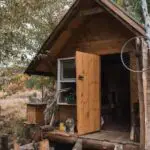
- What to Pack For A Winter Cabin Trip (With List & Tips!)
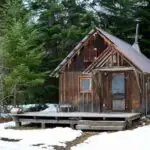
- Can You Plant Trees On Public Land? Allow Me To Explain!
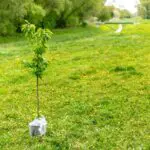
- Why Does Pasta Take Longer to Cook in the Mountains?

- Yurt vs A Frame Cabin: Best Choice For Minimalist Living?
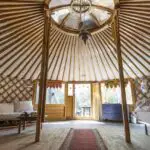
- Do Yurts Have Bathrooms?
